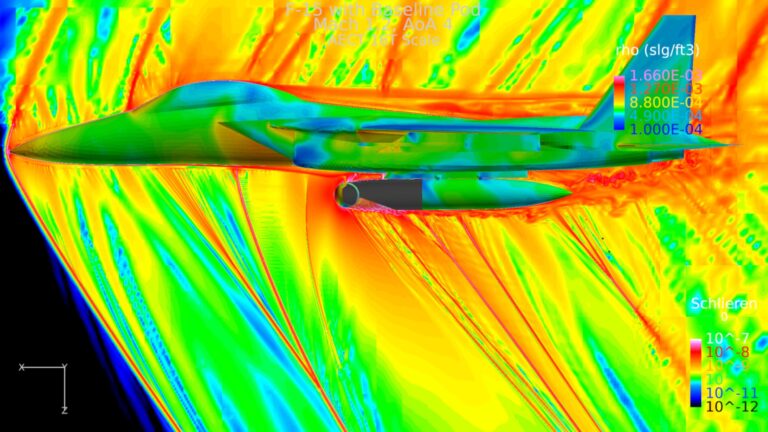
ARNOLD AIR FORCE BASE, Tenn. —
As weapon system designers continue to innovate for the defense of the nation, the men and women of the Air Force Test Center must advance the test capabilities available to develop and prove the superiority of those systems needed to meet the demands of the National Defense Strategy.
Members of the 716th Test Squadron and Integrated Analysis Branch of the 804th Test Group of Arnold Engineering Development Complex, have done just that with the assistance of an industry partner through the Small Business Innovation Research and Commercialization Readiness Pilot programs. In March, a new aero-optical test capability was transitioned to the 716 TS after a successful demonstration of the technology.
AEDC contracted with MZA Associated Corp. through the SBIR and CRP programs to develop a system that can accurately obtain wavefront information anywhere around aircraft models in transonic and supersonic wind tunnels.
“This final demonstration has been the culmination of many years of development and testing in an effort to create an aero-optical test capability in the AEDC wind tunnels,” said Dr. Rich Roberts, flight commander of the Store Separation Flight, 716 TS. “The ability to obtain this data will be useful to defense programs that will need to transmit laser-directed energy.”
Using the new system, the Integrated Directed Energy Aero-optical Surrogate, or IDEAS, combined with the Captive Trajectory Omni-directional Reflector, or CapTOR, will allow test personnel to characterize how the laser beam will behave and, if necessary, how to precondition it.
“IDEAS brings together MZA’s aero-optical diagnostic sensors along with our tracking and gimbal control software to provide full field-of-regard wavefront measurements,” said Dr. Matt Whiteley, vice president and senior scientist with MZA. “IDEAS allows for measurement geometries that are difficult to obtain using tunnel windows, including in the deep wake of the aircraft. It provides the complete picture of the environment in which a laser must operate.”
IDEAS and CapTOR build upon a test conducted last year of a portion of the system called Aero-Isolation Measurement Sensor, or AIMS.
AIMS utilized a miniaturized optical bench, and a laser directed through a window in the tunnel wall. IDEAS used in conjunction with CapTOR allows system instrumentation, including a target for tracking, to be contained within the tunnel, which enables improved accuracy and efficiency. The tracking ability allows test personnel to simulate laser sources or target locations.
“This diagnostic instrument will enable efficient, accurate tests,” said Taylor Swanson, Integrated Analysis Branch and manager of the directed energy development effort. “It is a great example of the ability of small businesses to develop capabilities for the Air Force and of the Technology Branch working with the small business to transition that capability to the test branches.”